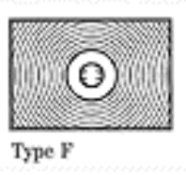sleepyjack
Member
I recently gave in to GAS and got myself a Nikon F3. I'm impressed by the sheer options in focusing screens. It looks like the camera came with a type R screen with the grid lines and horizontal split image, but I've never been very fond of the split image. Right now the lenses I have are the 24/2.8, 50/1.8, and 105/2.5, so all wide aperture, and I don't plan to get much longer. Most of my subject matter is casual walk around stuff and street shooting.
By far, my favorite viewfinder experience has been the Leicaflex SL. Maybe I'm just imagining it, but the central microprism just seems more refined - it almost seems like it has finer/denser prisms than most? The out of focus shimmer seems to linger more visibly than most microprisms until all of a sudden it doesn't, and then things are incredibly clear - the "snap" that people sometimes mention is real. It's a very simple, honest, and quick way to focus.
I'd like to replicate that experience as much as possible with the F3. Many folks on the forums seem to recommend type E, but I don't want any gridlines, so right now I'm looking at maybe type B or type J? I was also considering an H1 or H2, but apparently there is no DoF on those, which seems like it could be strange. Also, it seems that the "red dot" versions are brighter but perhaps don't "snap" quite as well due to loss in contrast and also a finer matte, so I'm thinking about trying to find a non-"red dot" version of whichever one I choose. For anyone who has used both systems, does that sound about right? Thanks
By far, my favorite viewfinder experience has been the Leicaflex SL. Maybe I'm just imagining it, but the central microprism just seems more refined - it almost seems like it has finer/denser prisms than most? The out of focus shimmer seems to linger more visibly than most microprisms until all of a sudden it doesn't, and then things are incredibly clear - the "snap" that people sometimes mention is real. It's a very simple, honest, and quick way to focus.
I'd like to replicate that experience as much as possible with the F3. Many folks on the forums seem to recommend type E, but I don't want any gridlines, so right now I'm looking at maybe type B or type J? I was also considering an H1 or H2, but apparently there is no DoF on those, which seems like it could be strange. Also, it seems that the "red dot" versions are brighter but perhaps don't "snap" quite as well due to loss in contrast and also a finer matte, so I'm thinking about trying to find a non-"red dot" version of whichever one I choose. For anyone who has used both systems, does that sound about right? Thanks












